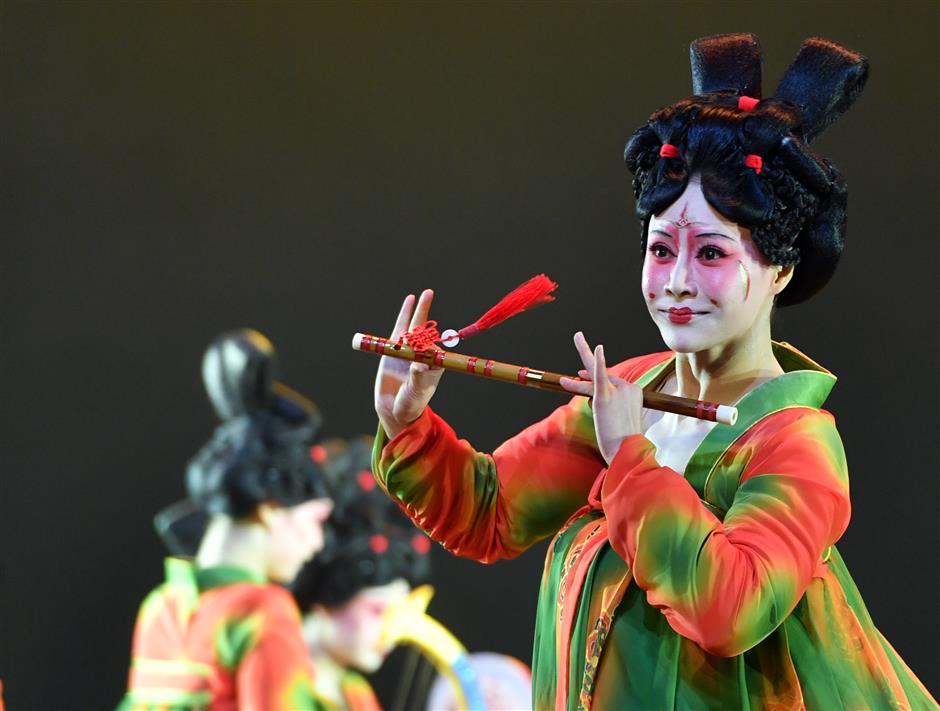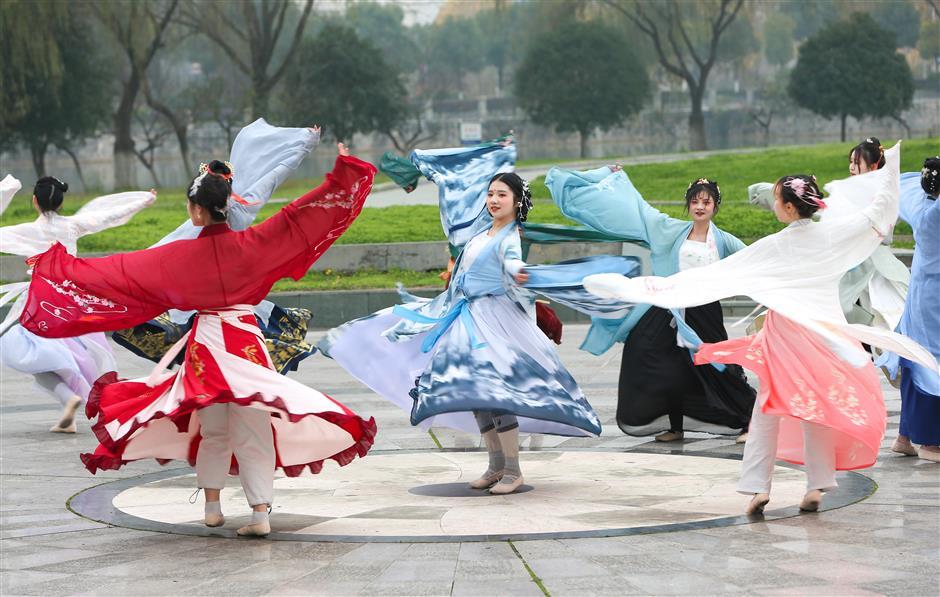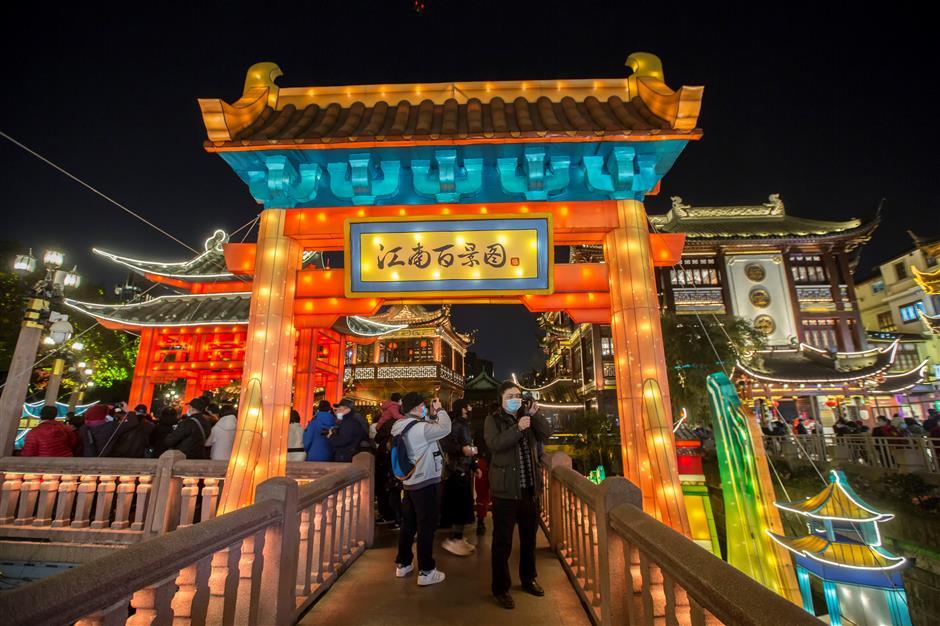 >
国际
>
国际
The 'Chinese wind' whirling through the entertainment industry
发布时间:2021-04-01 10:42:05 | 来源:People's Daily | 作者: | 责任编辑:杨俊康The annual China Central Television's Spring Festival Gala of song, dance and comedy sketches draws tens of millions of viewers every Lunar New Year Eve. It's the traditional entertainment of the night and the talking point of days following.
But this Year of the Ox, many TV viewers found something more entertaining. The aftermath buzz of New Year's Eve has been a dance show entitled"Tang Gong Ye Yan," or"Night Banquet in a Tang Palace." It was aired on Henan Television.
The show had the same sort of vibe as the Hollywood movie"Night at the Museum." Dancers looked like sculptures from the Tang Dynasty (AD 618-907), performing among ancient paintings and relics. Augmented reality technology turned the stage into vivid displays of a royal court.
The dance show attracted tens of millions of clicks online within 24 hours of airing and remains a hot topic half a month later.
"The dancers looked exactly the same, from costumes to make-up, as Tang beauties we usually see in paintings," said Yang Yijun, a Shanghai white-collar worker who admits to having watched the show more than 10 times."It was quite different from what we see in costume dramas or movies. Now I'm planning a holiday to Henan to visit the Henan Museum because I heard that the relics that appeared on the stage are displayed there."

"Tang Gong Ye Yan" was the most popular show during this year's Spring Festival in China.
The dance show might be regarded as the height of guofeng, or"Chinese wind"— a buzzword of Chinese pop culture.
Guofeng has stormed through movies, art, fashion and video games since two animation movies,"Monkey King: Hero is Back" and"Ne Zha," broke box-office records in China several years go.
Both films were adapted from ancient Chinese mythology.
An earlier survey of the music tastes of people 25 years or younger showed that traditional Chinese-style music has become one of the most popular genres, surpassing folk, hip-hop, rhythm and blues, and electronic music. It ranked second only to pop.
The survey by Tencent Music Entertainment, a leading music-streaming service in China, covered more than 800 million users on four major platforms in China: QQ Music, Kugou, Kuwo and Quanmin Karaoke.
Guofeng music doesn't necessarily refer to ancient masterpieces such as"Spring Night on a Moonlight River" or"High Mountains and Flowing Waters," but rather it’s modern-style songs rooted in traditional Chinese musical elements.
Ancient stringed instruments like the erhu and pipa are often used in the musical accompaniment, and lyrics are written in the form of ancient Chinese poetry. Some artists choose to sing guofeng songs in the style of Chinese opera.

College students in central China's Hubei Province create a traditional Chinese-style song-and-dance show.
Most of its singers and song writers are individual musicians who share their works on music or video platforms, hoping to cultivate their own fans.
Xiaoshi Guniang, a Sichuan-born singer, is one of them.
Engaged in guofeng music for more than a decade— long before the genre hit the charts or was even defined— she recorded a song entitled"Aishang," or"Love Dies Young." She didn't expect it to gain much popularity, but it was selected as the theme song for a TV costume period drama 12 years after it was recorded.
Now the singer has millions of followers on various social media platforms.
Her latest project focuses on Changsha, capital city of central China's Hunan Province.
"We have a team of 20 people, and they tell me a lot of stories about the city," she said."The more I learn about the city, the more I can grasp the feeling of the songs."
Guofeng isn't confined to music.
One of the most phenomenally popular mobile games released last year was"Jiangnan Baijingtu," which literally means"100 views in Jiangnan."
Developed by Shanghai-based company Coconut Island, the simulation game allows players to build Ming Dynasty (1368-1644) cities in a region south of the Yangtze River.
There is not much creativity about the gameplay itself. On the contrary, simulation game fans could name numerous titles of a similar style. But this game attracted more than 5 million downloads within just a month after it appeared online, and it soon became one of the most talked-about games on social media.
The art style of the game makes it unique. The characters and buildings in the game are in the style of traditional elaborate paintings. When the player works to construct a city, it feels like painting on a blank sheet of white paper.

The simulation game"Jiangnan Baijingtu" is featured at the annual Lantern Festival show at Yuyuan Garden in Shanghai.
"To be honest, the game has many weak points," says Mo Shuang, a college student."It is money-grabbing and battery-killing, and some of its features are so stupid that you can't believe it is a finished product instead of a beta demo. But I still spend a lot of time thinking about how to make my cities more beautiful. In my opinion, the artists save the game."
A guofeng fan, Mo said she believes that the game is a good medium for people to get to know Chinese culture.
"In the game, you can build some real historical sites, such as the Porcelain Tower of Nanjing and Yuyuan Garden in Shanghai," she said."And some of the residents living in your cities are real historical figures whom I've never heard of before. It is an eye-opener for me."
In a game developers' session recently organized by Tap Tap, Wesley Bao, chief executive of Coconut Island, said the game harks back to many ancient Chinese paintings that described city life.
"We want to tell the stories of common people living in an ancient dynasty, so that every resident living in a player's city has his own story. These are people with everyday jobs, who catch diseases and die. We know that there is not much to talk about in the gameplay itself, and we'll try to improve that in the future."
Bao said the team at first wasn't very interested in Chinese history, but it wanted to do something different from what other game companies were turning out. But in the process of developing the game, they became captivated with the charm of history and culture.
"I believe that games can culturally influence people, similar to novels and movies," he said.
When a new cultural trend suddenly becomes all the rage, some concerns arise. Guofeng is no exception.
Mu Yingfeng, a guofeng song writer for years, said he feels sad that writers of the genre today aren't really motivated by the true meanings behind lyrics. They just pile beautiful words together, creating songs that are flowery but empty.
"Such products won't resonate with audiences and will be washed out quickly," he predicted."If you truly love guofeng, then you know that it is based on a culture extending back for thousands of years. The first necessity is to sit down and study the past."


